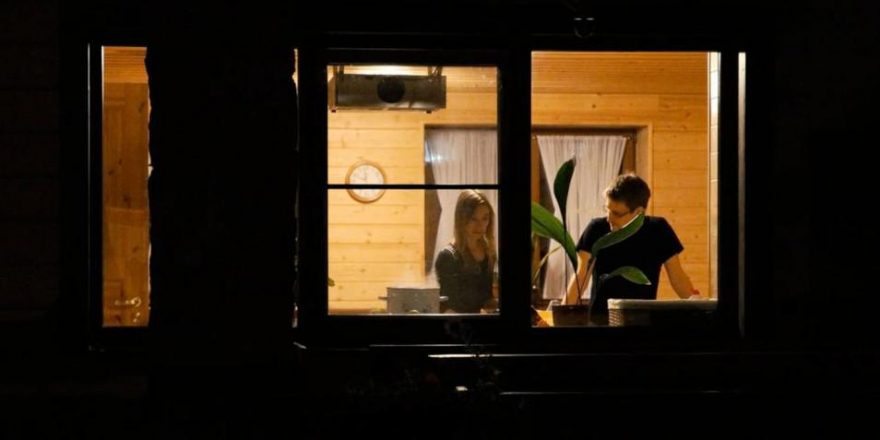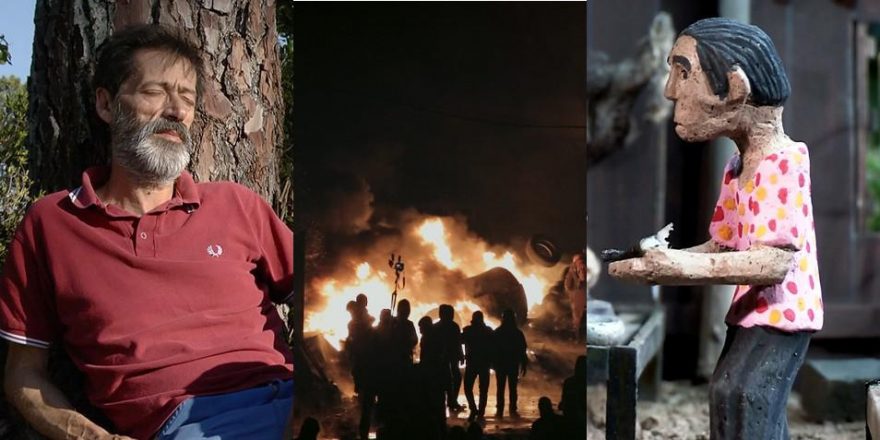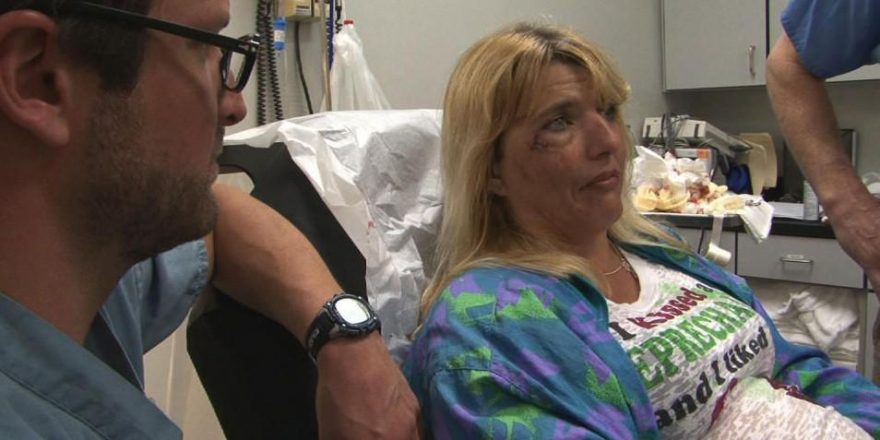Noting that any year’s crop of Best Documentary Academy Award nominees is a motley assortment is so commonplace as to barely warrant repetition. Given the arcane, ever-shifting Documentary Branch voting rules and the wildly disparate aesthetic and ethical philosophies of documentary filmmaking exhibited by members of that branch, it couldn’t be any other way. Thus far this decade, winners have included Inside Job, Undefeated, Searching for Sugar Man and 20 Feet From Stardom, all films whose longterm relevance to the form and the culture at large, like that of many past winners, seems dubious at best. The five films nominated this year, CITIZENFOUR, Finding Vivian Maier, Last Days in Vietnam, The Salt of the Earth and Virunga are about as representative a crop as one can reasonably expect of the voting process: there’s good, bad, old, new, and plenty in-between.
Laura Poitras’s Ed Snowden thriller CITIZENFOUR feels like the frontrunner at the moment, and not undeservedly so. It’s certainly the most edge-of-your-seat exciting of the bunch, at least during the film’s long mid-section in which Poitras introduces us to Snowden, ensconced in an anonymous Hong Kong hotel room, and tracks the stage management of his revelations to the world while pausing to watch him send e-mails or chew a blueberry muffin with his mouth hanging open (this is the film’s best material). CITIZENFOUR was a film-in-progress about national-security overreaches that went in a different yet complementary direction once Poitras began communicating with Snowden, and the seams do show at times, especially in the film’s meandering last third. This diffuseness easily makes it the least complete part of her post-9/11 trilogy — both My Country, My Country and The Oath are tighter, more challenging works — but CITIZENFOUR still features plenty of Poitras’s bravura “this is now” filmmaking, enough to set it apart from most films out there scrambling to proclaim their immediacy.
When placed alongside CITIZENFOUR and the massive success of an ethically uncomfortable Iraq War fiction like American Sniper, Rory Kennedy’s very straightforward Last Days in Vietnam feels hopelessly out of step with the current political and documentary climate. This isn’t wholly a bad thing. It does as its title promises, using a mix of talking heads, archival footage, and some of the worst CG graphics seen on film since the climactic plane crash in Air Force One, to tell the tale of the disarray surrounding the 1975 American withdrawal from Saigon. There’s nothing really surprising here, little that one couldn’t glean from reading an article on the subject. Even so, Kennedy’s film is briskly, efficiently edited, clear to a fault, occasionally even emotional. If you don’t watch a lot of docs, you’d be surprised at how few of these things are a given. Last Days in Vietnam might be the best documentary of 1986.
One wishes Finding Vivian Maier had been made in that mid-’80s, pre–Michael Moore era of documentary filmmaking when directors starring in their own films was somewhat less common than it is now. Perhaps back then, so much of the film, which should have been devoted to the mysterious titular nanny/street photographer, likely wouldn’t have been given over to co-director John Maloof, filmed in an ill-lit, poorly framed shot (is he in his parents’ rec room?), awkwardly narrating the tale of how he discovered Maier’s work at an auction. Maloof’s narrative should have been dispensed with in a couple of white-on-black title cards at the outset, but instead it somehow becomes a backbone for the haphazardly arranged skeleton of a story the film can’t seem to assemble correctly. Midway through the movie, Maloof expresses his frustration that the photographic establishment (MoMA and their ilk) has been reluctant to acquire Maier’s work and you realize why he’s the protagonist of Vivian’s story, and what this documentary is really up to: Finding Vivian Maier is a feature-length ad for Maloof’s booming Vivian Meier business. Recent lawsuits that have hit Maloof from members of Maier’s family suggest that others have noticed this as well.
Wim Wenders and Juliano Ribeiro Salgado’s The Salt of the Earth, another portrait of a photographer and his work, is as sensitive and carefully made as Vivian Maier is crass and slipshod. Their film about the life of acclaimed, globetrotting photojournalist Sebastião Salgado does pretty much everything right, from structuring and layering its three main voices (Wenders plays the curious admirer, Juliano the son looking to know his distant father better, and Sebastião plays himself) to choosing the right photographs to tell Sebastião’s tale and staying mostly out of the way, to carefully blending color and black-and-white in its vérité sections, to underlining and propelling the narrative with rich, intriguing music. It’s perhaps a little trad, and one wishes more time had been spent examining the ethics of white photographers working with indigenous cultures rather than its save-the-rainforest call-to-action coda, but even with that, The Salt of the Earth might actually be the most complete of the five films nominated — at least in terms of the way it sets up expectations and achieves them, while also providing a coherent aesthetic experience.
The only film likely to unseat CITIZENFOUR is, like The Salt of the Earth, a call to arms to save the planet from humankind’s worst impulses. As a cause, Virunga is unimpeachable: who, outside of the world of big business mining interests, wouldn’t look at the vastness of the titular Congolese National Park and want to save it and its gorillas, giraffes, gazelles and the like for generations to come? As a movie experience, it’s perhaps less so. An unruly mix of war film, nature film, and political exposé, as it progresses, it layers on subplots like chopped wood on a pile. Its undisciplined cinematic sensibility (an early sequence that cuts from a landscape tracking shot to a helicopter shot to a nighttime time lapse is especially overboard) takes away time that might have been better spent following its narrative strands, and Virunga grows more inchoate along with the situation it documents. I personally wouldn’t be sad to see it win — its victory might help draw even more attention to the plight of Virunga Park, but in that feeling we can locate questions the doc community needs to ask itself: what are these awards, and documentaries themselves, for anyway? Do we shower plaudits on the most worthy causes, the best films, or do we hope for some happy intersection of the two to roll along?
A final note: Much has been made about the exclusion of Steve James’ Roger Ebert picture Life Itself from this group. It’s hard to argue that this omission is any more egregious than other slights we could name — everyone has their favorite “should-have-beens,” but something about denying a movie that documents the long career and final days of one of the most beloved figures in American film, directed by one of our most celebrated documentarians, does ring a little strange. Sure, Life Itself isn’t as rich and epic as Hoop Dreams (which famously also wasn’t nominated), as knotty as Stevie, or as immediate as The Interrupters (which didn’t even make the shortlist). But should the film’s straightforward, well-executed classicism be held against it? Much of the critical praise around Life Itself was so clearly tied to affection for Ebert (from writers all in his debt in some way), that James’s filmmaking choices, generally smart, elegant and pleasingly self-aware, seemed to get short shrift. So it often goes for movies that don’t announce their stylistic differences with blaring trumpets. Life Itself is a good story cleverly told, and regardless of the nomination snub, feels like a Steve James movie, and one that people will return to.






